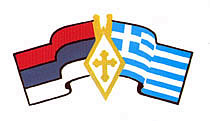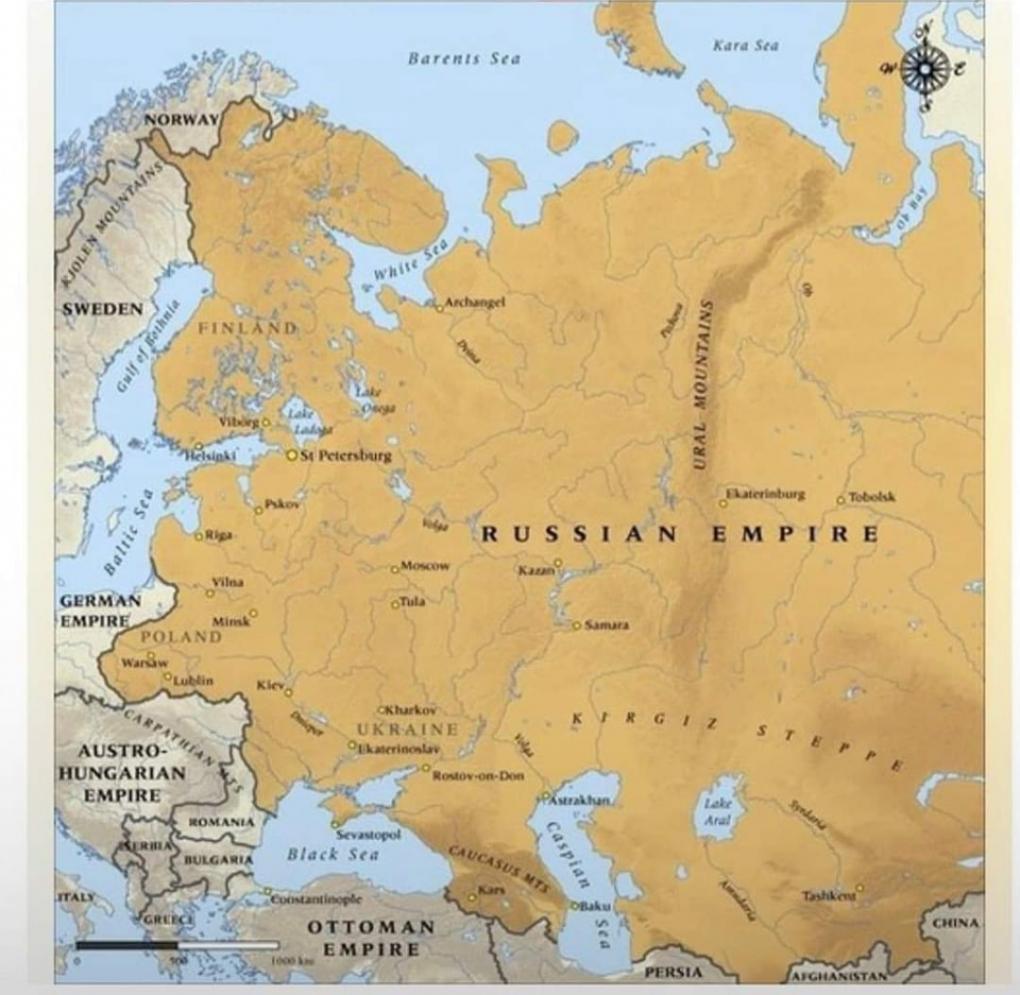Serbs on Corfu 1916 - 1918
For the future and happier generations, the island of Vido will became the Serbian Jerusalem, a place of gathering of our grateful descendants.
(Dimitrije, Metropolitan of Serbia, 1918.)
CORFU (KERKYRA, KRF)
The island of Corfu, the biggest in the Ionian Sea, was named after the beautiful nymph Korkyra, the wife of Poseidon according to Greek mythology. The city of Corfu is administrative and cultural center of this island, which has 110,000 inhabitants today. Corfu, together with the rest of the islands in the Ionian archipelagos, became a part of the Greek state on the 21st of May 1864, an event coommemorated every year in the grand Enosis (Unification) festivities.
At the end of 1915 and the beginning of 1916, under the pressure of the joint offensive of the Austro-Hungarian, German and Bulgarian troops, the Serbian army, Serbian government, National Assembly, as well as a part of the Serbian civilian population, was forced to withdraw from Serbia through Montenegro to Albania. On this long journey, Serbs went through the biggest exodus in their recent history. In his official report to Serbian Prime Minister Nikola Pasic, General Bozidar Terzic, Minister of Defense, wrote that on their way through Albania, 243,877 persons was killed or taken as prisoners or died from hunger or cold weather. The approximate total number of casualties was at least 150,000 including both soldiers and civilians. - (Read "THE ARRIVAL IN CORFU" by Carlo Sforza)
From 18 January to 21 February 1916, 151,828 Serbian soldiers and civilians were evacuated with Allied ships from the Albanian port of Valona to Corfu. The first port of disembarkation on Corfu was Gouvia (Guvino), six km north from the city of Corfu.
The suffering of solders and civilians did not, however, stop upon their arrival on the "Island of Salvation", as the Serbs named Corfu.
The Allies had not had enough time to make provisions for adequate care of such a great number of people. There was lack of food, clothes, tents and heating. For 8 days after their arrival, the cold rain would not stop. Without tents, suffering solders began to die en masse.
On 21 January 1916, the army hospital units from Morava, Pirot and Cacak were the first to land on the rocky island of Vido. Soon afterwards, a couple of thousands of young boys - recruits arrived on the island. Most were seriously ill and on the verge of death.
In the beginning (those first days), up to 300 soldiers were dying every day. Twelve hundred of them were buried in the island shores, whereas later (because of lack of burial grounds), the boats from the French hospital ship "St. Francis of Asisi" would carry the dead bodies and drop them in the Ionian Sea, a few kilometers away from the island, in what was called "the Blue Graveyard".
It is estimated that around 10,000 Serbian soldiers and recruits were buried on the island of Vido and in the "Blue Graveyard".
The Royal Navy of the Kingdom of Serbs, Croatians and Slovenes erected the first monument dedicated to the perished soldiers. It is a Stone Cross situated above today's Mausoleum. The monument was uncovered by King Aleksandar I Karadjordjevic in 1922, in the presence of a great number of Yugoslav and Greek military, government and church officials.
The Mausoleum (kosturnica) on the island of Vido was the work of architect Nikola Knjazev and was erected bu the Kingdom of Yugoslavia in 1936. Within the marble walls of the Mausoleum, there are 1,232 coffers (cases), containing the bones of soldiers previously buried in 27 cemeteries of Corfu, the names of which were known. The bones of those soldiers who remain unknown were buried under two separate stone plaques outside the Mausoleum.
The gentle Mediterranean climate, adequate medical care and proper nourishment by the Allies, new uniforms and, above all, warm and close relationships with the local Greek inhabitants, led to a miraculous recovery of the Serbian army.
By a kind gesture of the local Greek authorities, the sessions of the Serbian National Assembly were held in the National theatre of Corfu from 19 January 1916 through to 19 November 1918.
The seat of the Serbian government was established in the hotel "White Venice"
The churches of St. Archangel, the Holy Trinity and St. Nicholas where given to the Serbs for temporary religious use.
The cultural life of Serbs in Corfu was very lively, with various theatre performances, musical concerts etc. organized frequently.
The sessions of the Serbian National Assembly were held in the National Theatre of Corfu Serbian Government and Parliament in Corfu
Also, the municipal authorities of Corfu temporarily gave a printing house to the Serbs, which was supplied with the most modern printing equipment offered by the French. This way, they were able to publish the "Serbian Newspaper" with a circulation of 10,000 copies and many valuable books, as for example "Diplomatic Correspondence", "Codification", "Motherland" etc. In addition, school books for children in Serbian schools were printed there.
The Serbian primary school with 290 pupils and a Serbian highschool with 120 pupils were organized on the island of Corfu.
Furthermore, sport associations were organized and a number of football matches were played with the allied teams.
Finally, the island was full of Serbian restaurants and grocery stores.
The close ties that Serbs established with the local population during their stay in Corfu were so strong that they have lasted up to the present time. Many Serbs decided to stay and live on this island, and also many marriages were arranged.
For instance, the owner of "White Venice" hotel in which the Serbian government had settled, Mr. Ioannis Gazis, married all of his three daughters with Serbs. The eldest one, Djovana, married officer Milovan Colak-Antic, the second eldest, Avgousta, married the future prime minister of the Yugoslav government and founder of modern economy Dr. Milan Stojadinovic, and the youngest one, Zafiro, married the distinguished professor Ljubomir Kazimirovic.
Serbian Prime Minister Nikola Pasic Greek Prime Minister Eleftherios Venizelos
The wife of the Minister of Foreign Affairs of the Kingdom of Yugoslavia Aleksandar Cincar-Markovic was also from Corfu.
Regent Aleksandar Karadjordjevic and Serbian officers also were godfathers of many Greek children from Corfu. However, the greatest proof of the living traces of the Serbians' stay in Corfu is the fact that even today, in the vocabulary of elderly people in Corfu, the following Serbian words are still in use: "tata" (father), "baba" (grandmother), "glava" (head), "kuca" (house).
Upon departure from the island, Corfu's men and women were crying and thus blessing the Serbian soldiers: "Kali ora stratioti Serve, may God give you good Serbs a long life and help you and your army to return safely to your homes and families who expect you eagerly. Today and always we will pray to God together as Christian brothers " (from the "Serbian Newspaper", Corfu, 16 June 1916 ; Read also the "LETTER TO A SERBIAN SOLDIER" by unknown Greek woman).
The Serbian mansion in Corfu is located at the center of the city, in 19, Moustoxidou street and houses the Museum "Serbs on Corfu 1916-1918" and the Honorary Consulate of Serbia and Montenegro.
Museum "Serbs on Corfu 1916-1918" Memorial Plaque on Museum Interior of the Museum
Col. (ret.) Milorad Prelevic was the curator of the museum's permanent exhibition. The exhibition is organized in 10 separate topics, which chronologically illustrate the historical period from 1915 until the end of the First World War through photos, maps, documents and objects, as follows:
Guvija (Govino) Memorial dedicated to the soldiers of Division "Drina" Great friend of Serbs Giannis Gianoulis
Topic 1: The attack of Austria-Hungary, Germany and Bulgaria and the defense of Serbia
Topic 2: The withdrawal of the Serbian army and people through Albania and Montenegro
Topic 3: The evacuation of the Serbian army from Albania by French boats to Corfu and Bizerta
Topic 4: The stay of Serbian children in Corfu - their recovery and education
Topic 5: Vido
Topic 6: Serbian military camps in Corfu
Topic 7: Re-organization and training of the Serbian army in Corfu
Topic 8: The stay of Serbian Government and National Assembly in Corfu and the adoption of the Corfu Declaration in 1917
Topic 9: The cemeteries and monuments in the country and abroad
Topic 10: The departure of the Serbian army with allied ships for the Halkidiki peninsula in May 1916
- Извор
- Читалац еНовости
Коментара (1) Оставите Ваш коментар Објавите новост
Руске снаге су изводиле ударе на циљеве у позадинским регионима Украјине, укључујући војне аеродроме. Украјинске формације покренуле су неколико таласа беспилотних летелица на руску територију, нападајући и нафтовод у...
Џастин Трудо подноси оставку усред највеће политичке кризе у својој деветогодишњој владавини
Украјинска војска изгубила је више од 12.000 војника и до 3.000 јединица технике у неуспешној одбрани Курахова, саопштило је Министарство одбране Русије
У наредних 15 година, такво оружје „ће моћи да погоди Британију из било ког дела света“, рекли су високи извори из области одбране овом листу.
Извор зла и корупције је западна \"демократија\". Вашингтон и Брисел признају као демократске само оне земље које дозвољавају да њихова политика, економија, безбедност, медији, образовање, наука и култура, дакле...
Данас су, како је и очекивано, украјинске формације започеле офанзиву са окупиране територије Курске области. У овом тренутку Оружане снаге Украјине уводе у борбу снаге које су концентрисале у...
Остале новости из рубрике »





















